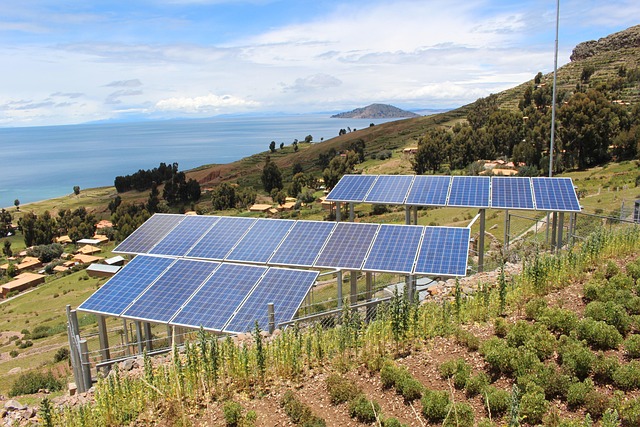Solar Panels in Urban Spaces: Innovative Installations That Shine
As urban environments continue to grow and evolve, the quest for sustainable energy solutions has never been more pressing. Solar panels have emerged as a crucial component in the development of renewable energy strategies, especially in densely populated areas where traditional energy sources contribute significantly to pollution and climate change. This article explores how innovative installations of solar panels are transforming urban spaces into cleaner, greener habitats.
The Importance of Solar Energy in Urban Areas
Urban centers are often characterized by their substantial energy demand, largely fueled by industries, transportation, and residential consumption. This high consumption leads to increased greenhouse gas emissions, making cities significant contributors to global warming. Solar energy presents a viable solution to reduce urban carbon footprints. By harnessing sunlight, cities can generate renewable energy onsite, reduce reliance on fossil fuels, and promote ecological balance.
Integrating solar panels into urban landscapes not only provides an alternative energy source but also encourages societal shifts towards sustainability. By promoting solar energy, cities can drive technological advancements, foster job creation in green industries, and increase public awareness about climate issues. As cities embrace innovative solar panel installations, they lead the charge toward a sustainable future.
Innovative Solar Installations in Urban Spaces
Across the globe, urban planners and architects are devising creative ways to incorporate solar technology into the fabric of the city. These innovative installations range from rooftop solar panels to more avant-garde applications like solar facades and photovoltaic (PV) sidewalks. Such projects are not merely functional; they also aim to enhance aesthetics while providing energy solutions. Below are several examples illustrating the innovative nature of solar panel installations in urban settings.
Rooftop Solar Panels
Rooftop solar panels remain one of the most common applications of solar technology in urban environments. These installations capitalize on underutilized spaces atop buildings, providing substantial energy generation without requiring additional land. Cities like San Francisco and Sydney have seen a surge in rooftop solar adoption as residents and businesses seek to reduce energy costs and carbon emissions.
Moreover, various programs incentivize rooftop installations, such as tax rebates and microgrid initiatives. These incentives not only encourage individual investment but also foster community engagement around renewable energy. As more buildings adopt solar panels, urban areas can witness significant reductions in energy demand, thereby alleviating pressure on municipal grids.
Solar Facades
Beyond rooftops, solar facades represent a groundbreaking approach to urban solar implementation. This innovative method involves equipping the outer walls of buildings with solar-integrated materials or panels. Solar facades serve a dual purpose: they generate energy while also serving as part of the building’s architectural design.
Famous examples include the Bosco Verticale in Milan, Italy, where vertical gardens and solar panels coexist harmoniously. The facade of this residential building not only supports energy generation but enhances air quality and improves the visual appeal of the cityscape. By integrating solar technology into the fabric of buildings, cities can create cohesive designs that contribute to both sustainability and urban aesthetics.
Solar-Powered Public Infrastructure
Public infrastructure is another area where solar energy is making significant inroads. Solar panels are increasingly being used on amenities such as bus stops, lighting systems, and park benches across urban landscapes. For instance, smart bus shelters equipped with solar panels can power LED displays that provide real-time transit information, charging ports for passengers’ devices, and ambient lighting.
The addition of solar panels to public infrastructure not only enhances energy efficiency but also provides citizens with reliable services powered by clean energy. These installations represent a step towards integrating renewable energy into the everyday lives of urban dwellers, reinforcing the idea of a smart city that prioritizes sustainability.
Solar Parking Lots and Carports
As electric vehicles (EVs) rise in popularity, the need for charging stations has increased dramatically. Solar parking lots and carports are emerging as a perfect solution for fulfilling this demand while generating clean energy. These structures utilize solar panels to power EV charging stations, offering convenience to users while promoting green energy usage.
Projects like the solar canopies installed at the California Academy of Sciences in San Francisco exemplify this trend. The parking lot features a shade structure adorned with solar panels that generate clean energy, which can be used to power the facility’s operations or charge EVs parked beneath it. This innovative dual-purpose installation exemplifies how cities can maximize efficiency while promoting sustainable transportation.
Solar-Powered Community Gardens
Community gardens in urban centers provide not only a source of fresh produce but also a space for community engagement and education about sustainability. Incorporating solar panels into these green spaces offers a sustainable approach to their management. Solar energy can power irrigation systems, lighting, and other necessary equipment, ensuring that garden operations remain energy-efficient.
Moreover, community gardens powered by solar can serve as educational hubs, where residents can learn about renewable energy technologies and sustainable gardening practices. Such initiatives help bridge the gap between urban living and nature while promoting a culture of sustainability in cities.
The Challenges of Solar Adoption in Urban Settings
Despite the numerous advantages and innovative installations, the uptake of solar panels in urban spaces is not without challenges. Various barriers can hinder the effective integration of solar technologies in densely populated areas. Building codes, zoning laws, and lack of awareness or skepticism regarding potential returns on investment can impede progress. Furthermore, access to sufficient sunlight, shadowing from surrounding buildings, and the structural integrity of older buildings can limit the feasibility of certain installations.
Urban planners must address these challenges strategically. Collaboration between local governments, building owners, solar technology providers, and the community is essential to maximize potential opportunities. Additionally, public education campaigns can enhance awareness about the benefits of solar energy, helping to mitigate skepticism and encouraging broader participation in urban solar initiatives.
Conclusion
The transition toward renewable energy sources like solar power is crucial for the future of urban living. Innovative solar panel installations are paving the way for cities to embrace sustainability and enhance energy efficiency. From rooftops and facades to public infrastructure and community gardens, the potential for solar integration in urban spaces is vast and varied.
As municipalities continue to confront the impacts of climate change, it is imperative that they prioritize sustainable energy solutions, including solar technology. By showcasing successful installations and overcoming barriers to adoption, cities can lead the charge toward a cleaner, greener future—one that not only shines with energy but also radiates inspiration for future generations.



